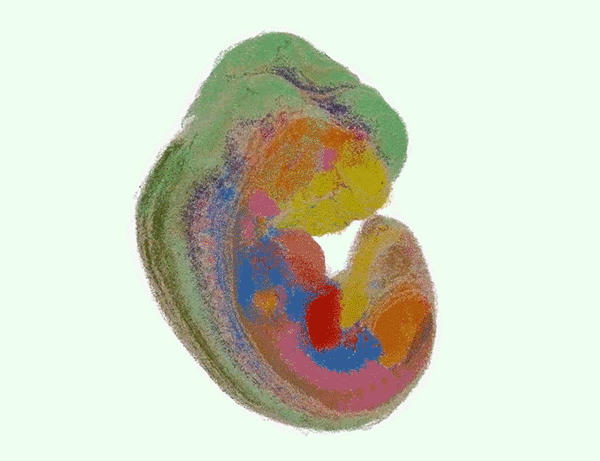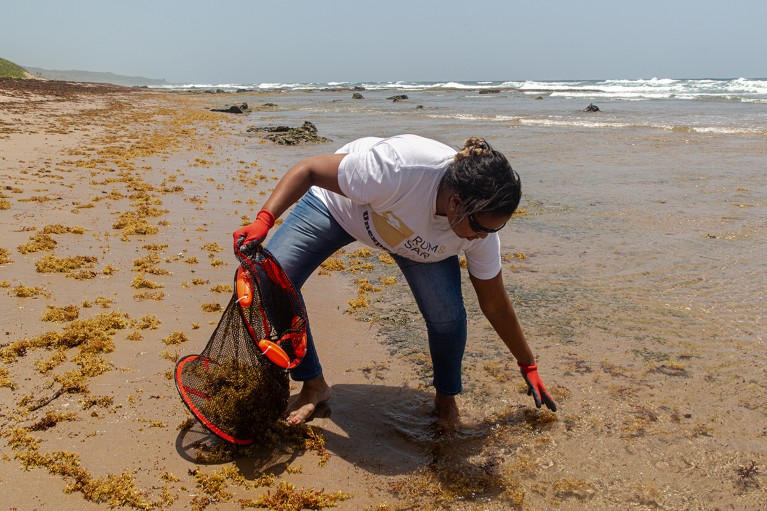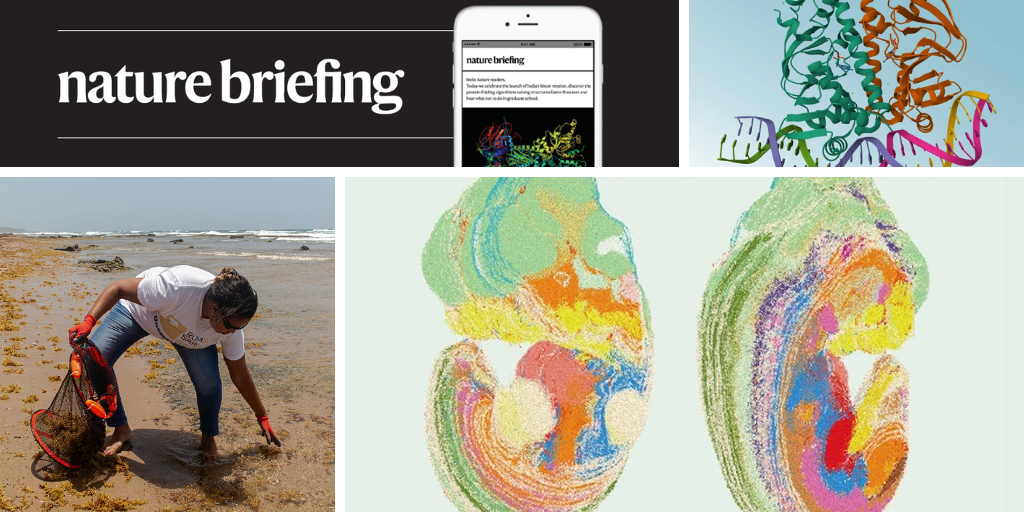Hello Nature readers, would you like to get this Briefing in your inbox free every day? Sign up here.

The team recorded the behaviour of a total of 7.8 million cells in a mouse embryo at 9.5 and 11.5 days after fertilization — a time when most mouse organs are forming. (X. Qiu et al./Cell)
Researchers have created the most detailed 3D cellular map yet of a mouse embryo, visualizing close to eight million cells. The map shows how cells interact and migrate in an embryo less than two weeks after conception, revealing the structures of every major organ developing in the embryo, from the brain to the heart and the spinal cord. Such maps could be created for any species, including human embryos, and could help researchers to identify causes of congenital diseases.
The code underlying the Nobel-prize-winning tool for modelling protein structures is open at last. Scientists can now download the software code for AlphaFold3 and use the artificial intelligence tool for non-commercial applications. The initial publication, six months ago, of AlphaFold3 without its code drew criticisms from scientists, who said the move undermined reproducibility. AlphaFold3 is capable of modelling proteins in concert with other molecules.
Efforts to adopt blood tests and brain scans to diagnose Alzheimer’s disease have fuelled controversy among scientists. Advocates of the tests say that biomarkers can indicate Alzheimer’s at an early stage, when any treatments that are developed to reverse the disease are more likely to be effective. Critics worry that these tests might cause unnecessary anxiety. “There’s a risk of misunderstanding and distress that individuals who are asymptomatic will have if we tell them they have Alzheimer’s, whereas nothing will happen in their lifetime in a majority of cases,” says neurologist Nicolas Villain.
Reference: JAMA Neurology paper
Features & opinion
Designing bionic prosthetics that fully restore the function of lost limbs hinges on accurately replicating somatosensation — the collection of senses that interpret touch, temperature, pain and body position. Neuroengineer Giacomo Valle has been tweaking electrical impulses that cause feelings of texture and pressure, and others have created warm and cool sensations in “phantom” hands. Engineer Hugh Herr, however, argues that the sense of embodiment — users feeling like the prosthetic is a part of their body, not just an artificial attachment — is most important.
The heavily pixellated male figure that featured in a 1974 broadcast to the stars from the Arecibo Observatory might seem a sexist choice, but historian Rebecca Charbonneau argues that it deserves a more subtle interpretation. “The messages that humanity sends to extraterrestrial intelligences are not just scientific artefacts, but also works of art that reveal much about the people who created them,” she writes. “They serve as a cosmic mirror, reflecting both our aspirations for universality and the limitations of our perspective.”
Where I work

Legena Henry is a mechanical engineer at the University of the West Indies at Cave Hill in Barbados and the chief executive of Rum & Sargassum.Credit: Micah B Rubin for Nature
Mechanical engineer Legena Henry co-founded a Barbadian company that makes renewable biofuels from rum-distillery waste water and sargassum, a seaweed that washes up on the beaches. She estimates that converting around 75% of the vehicles on the island nation to run on this biofuel could halve the cost of fuel for Barbadians and slash carbon emissions. “All the islands in this region of the Caribbean have a sargassum problem and a rum wastewater problem — and ultimately a climate-change problem,” she says. “This solution is a win–win–win.” (Nature | 3 min read)
Happy New Year! If you’re a Martian, that is. Today is the day that we turn the page from Mars year 37 to year 38.
Phew, well done for making it through the last 668 sols. Here’s hoping that 38 is our year. Help ensure it is by emailing your feedback on this newsletter to [email protected].
Thanks for reading,
Flora Graham, senior editor, Nature Briefing
With contributions by Jacob Smith and Smriti Mallapaty
Want more? Sign up to our other free Nature Briefing newsletters:
• Nature Briefing: Careers — insights, advice and award-winning journalism to help you optimize your working life
• Nature Briefing: Microbiology — the most abundant living entities on our planet — microorganisms — and the role they play in health, the environment and food systems
• Nature Briefing: Anthropocene — climate change, biodiversity, sustainability and geoengineering
• Nature Briefing: AI & Robotics — 100% written by humans, of course
• Nature Briefing: Cancer — a weekly newsletter written with cancer researchers in mind
• Nature Briefing: Translational Research — covers biotechnology, drug discovery and pharma


